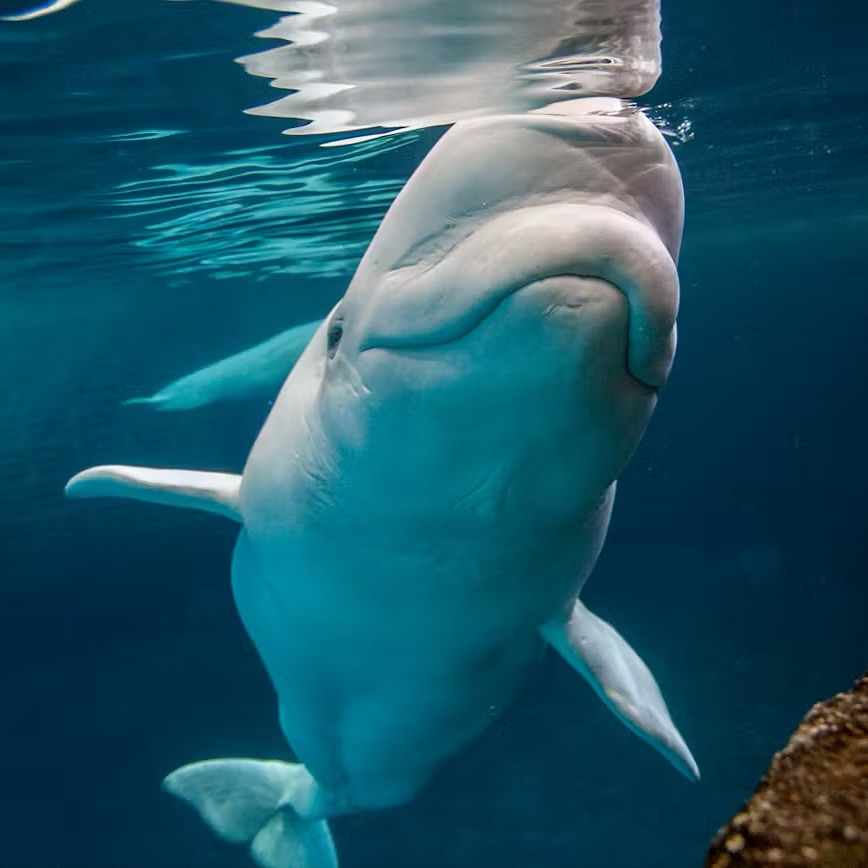- The emotional farewell to Kayavak highlights the bond between animals and their human caretakers and the responsibilities involved in wildlife care.
- The comprehensive efforts to save Kayavak underline the complexities of marine mammal medicine and the challenges faced in wildlife conservation.
- Kayavak’s life and legacy provide insights into the role aquariums play in education, research, and fostering public interest in marine life.
- The experience reflects broader themes in wildlife conservation, including the ethical considerations and emotional challenges faced by those working in animal care.
- The importance of public engagement and shared memories in continuing the conservation narrative for species like the beluga whale.
In the marine animal care community, the loss of a beloved creature like Kayavak, a 25-year-old beluga whale, is a profound moment of reflection. Over the span of her life, she became more than just a resident of Shedd Aquarium, becoming a bridge between people and the enigmatic world beneath the ocean surface. Kayavak’s story is not merely about her life but the broader implications for marine conservation and education.
When signs of her illness surfaced, a sense of urgency pervaded as experts mobilized quickly. This underscores the sophisticated nature of marine veterinary medicine, where practitioners must navigate intricate challenges. Beluga whales, like all marine mammals, require a specialized approach given their complex physiology and the array of potential health issues they can face. The emergency surgery performed on Kayavak exemplifies the lengths to which animal care professionals go to provide unparalleled treatment, reflecting dedication to their welfare.
The decision to euthanize Kayavak, although heartbreaking, was taken with deep consideration for her comfort and dignity. It reveals the weighty ethical responsibilities that caretakers bear. The moral challenges in wildlife care often involve making decisions where the lines between action and inaction blur, underscoring the compassion required in this field.
Kayavak’s life, from her birth at Shedd Aquarium to her final days, offers an educational lens into the fabric of aquarium life and the impact these institutions can have. Aquariums serve as living classrooms, sparking curiosity and imparting a sense of wonder about marine ecosystems. They provide unique opportunities for scientific research, conservation practices, and public involvement. The increase in knowledge about beluga behavior, physiology, and interaction with their environment is in part due to such initiatives.
Heartfelt recollections shared by the public about Kayavak are integral to the conservation narrative. These stories help galvanize ongoing engagement in wildlife conservation efforts. The collective memory and shared experiences of interactions with Kayavak create a ripple effect, promoting awareness and motivating conservation actions.
In witnessing Kayavak’s journey, we are reminded of the critical role aquariums play in protecting and preserving marine life. They offer a direct connection to animals that many would never encounter in their natural habitats. This relationship fosters a greater understanding and appreciation, which is vital for the future of species conservation. The emotional responses elicited by such connections can lead to profound shifts in public attitudes and behaviors toward wildlife preservation.
Moreover, Kayavak’s legacy accentuates the broader conservation themes relevant today. The health of marine species like belugas is intricately linked to ocean health, encompassing issues such as pollution, climate change, and the loss of biodiversity. Educating the public through the stories of individual animals can illuminate these significant environmental challenges, urging collective action.
As we carry forward the memory of Kayavak, we reiterate the essential themes of respect, responsibility, and care that define the mission of aquariums and marine conservation efforts alike. Harnessing public sentiment and sharing personal experiences can act as powerful motivators in habitat protection efforts and fostering a culture of respect for all forms of life.
Kayavak’s story is a poignant reminder of both the joy and sorrow inherent in animal care. The knowledge gained from her life will contribute to advancing marine animal medicine and enhancing the welfare of belugas and other marine species. As institutions continue to champion conservation work, the lessons learned from caring for creatures like Kayavak serve as a testament to the enduring bond between humans and marine life.
Thus, while we feel the loss of Kayavak, it also invigorates our commitment to the welfare of marine animals. Her life stands as a touchstone for understanding, compassion, and the pursuit of a world where creatures of the sea thrive in harmony with humans.
*****
Source Description
With heavy hearts, we say goodbye to 25-year-old beluga whale, Kayavak.
This past week, Kayavak showed signs of illness, and our expert caretakers and veterinarians responded immediately, assembling a team to provide novel and extraordinary care—including emergency surgery—to try and save her. Despite our speed and tireless efforts, Kayavak’s condition continued to worsen, and it became clear that she would not recover. With her wellbeing and comfort in mind, we made the difficult but compassionate decision to humanely euthanize her, surrounded by her trusted caretakers.
Kayavak was born at Shedd in 1999 – the first beluga calf that caretakers and guests had the privilege of watching grow up at the aquarium. And for those 25 years, she won hearts, sparked curiosity and built a bridge between people and the world beneath the waves.
We will continue to carry her legacy forward – in the care we provide, in the conservation work we champion and in the hearts of everyone she touched. If you have a memory of Kayavak, or words for the team who cared for her, we welcome you to share them here.
You can read more about Kayavak’s care and story in our latest blog—link in bio.


